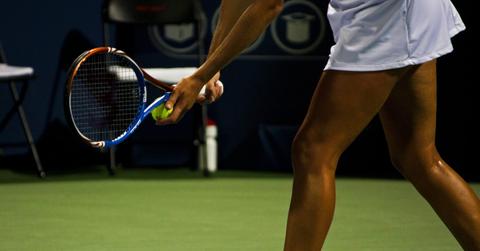How The U.S. Open Leads By Example In Going Green
The largest sporting event in the world just got a little greener. After a decade of working on a green initiatives program, this tennis event has diverted thousands of tons of waste a year with focused efforts like recycling and composting.
Updated May 13 2019, 5:11 p.m. ET
The US Open Tennis Championships is the largest-attended sporting event in the world. Every September, New York City prepares for this annual event which draws over 700,000 fans over the course of two weeks. Needless to say, things can get messy with that many people in one place. Back in 2007, the event was generating significant waste and not one recycling bin could be found on the property.
That is until Billie Jean King stepped onto the scene. King has broken records on the court as an athlete and off the court as an environmentalist. In 2006, she turned her attention to the National Tennis Center when it was renamed as the US Tennis Association Billie Jean King National Tennis Center. King, never one to take responsibilities lightly, stepped up and wanted to find a way to make the US Open an environmentally responsible event.
King urged the importance of change, saying, “To solve the serious environmental problems facing our planet, we need to shift our culture toward more sustainable practices. Sports are hugely influential and can play a significant role in causing a ‘green’ ripple effect of enormous proportions, encouraging industries and consumers alike to improve the choices they make every day.”
Lauren Davis spearheaded the US Open Green Initiative as Senior Manager for Strategic Initiatives and commented that this event, “is focusing on showing fans that attend live tennis events that the reuse practices in place really pay off.” Last year, the US Tennis Association (USTA) reduced its yearly carbon footbridge by 12,000 MT CO2e.
By composting and recycling materials, the US Open was able to divert 97 percent of its waste from landfills last year. It was able to achieve this by converting it’s food waste to compost for gardens and redirecting food to local communities. A large amount of paper products used by the event are also created from recycled or compostable materials. Even the tennis ball cans are up-cycled as lanyards for next year’s event.
The USTA has taken measures to create LEED certified buildings. Their Armstrong Stadium is the first eco friendly tennis stadium with a retractable roof. As a bonus, 95 percent of the waste created while created the building was recycled. To ensure other buildings meet new environmental standards, the center replaced all the lights in the stadiums with LED lights to reduce energy consumption by half.
Water has also been conserved by installing more efficient faucets. Even low emitting paints were used on Transportation Building and Grandstand Stadium to reduce pollutants and about 50 percent of their cleaning materials used are Green Seal Certified.
The USTA extended its eco-friendly mission to it’s National Campus in Orlando, where the Welcome Center is LEED certified. This building operates with an environmentally friendly agenda on almost every level from reclaimed water usage to electric car chargers.
After ten years of working on a better future, the USTA is now has one of the most comprehensive green programs in sports and has been able to divert 3,400 tons of waste from landfill because of their ongoing efforts. With their carbon footprint under control, the USTA continues to work with Green Sports Alliance and experts in the field of sustainability to maintain their progress.
The US Open has become an example of change, and other organizations can see how sporting events can thrive while being environmentally responsible. Fans can help reduce waste at venues by swapping out single use items like plastic bottles and bags with reusable water bottles and totes. Even when the event is huge, every little change makes a difference.
